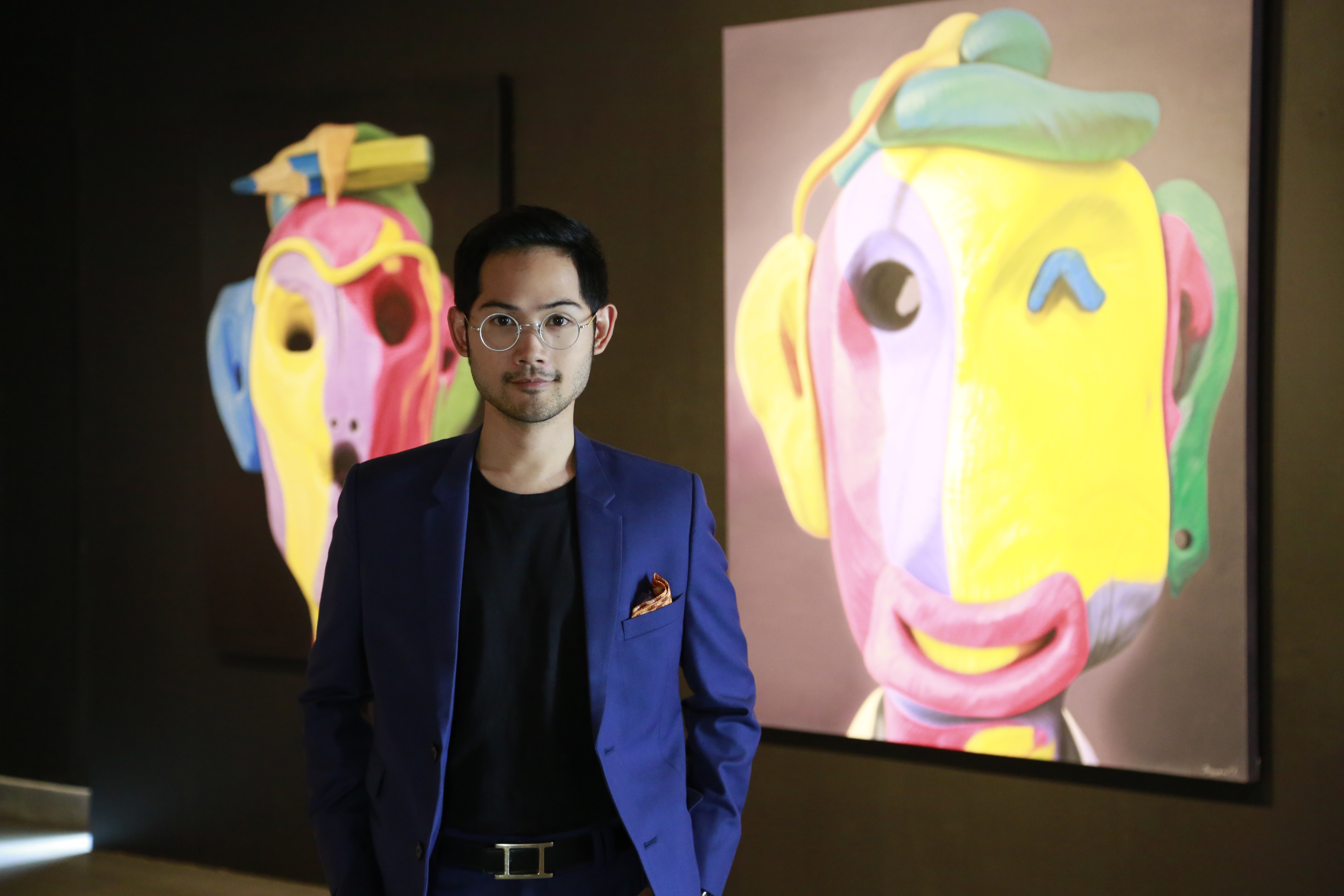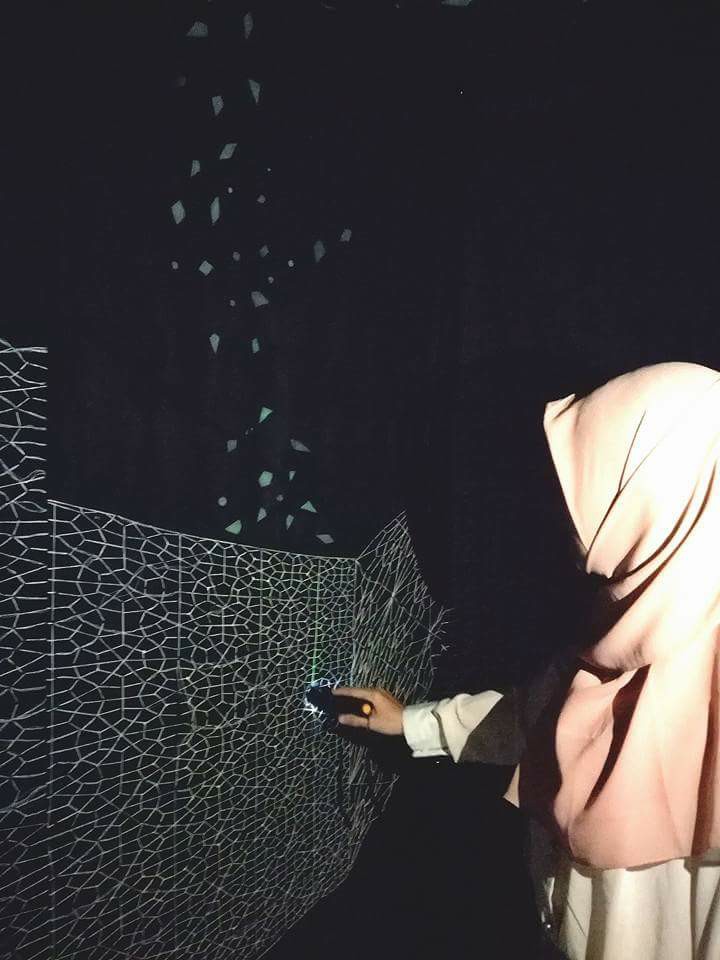At Asia Art Tours we are proud to work with SAC Art Center of Bangkok. Home to some of South-East Asia’s best political art.
Below you will find our interview with the head of SAC Gallery Ung Jongsuwat Angsuvarnsiri

1. Could you tell us a bit about your family and SAC? How and why was it founded? What goals is it trying to promote? What is your role at SAC?
Subhashok the Arts Centre (S.A.C.) was founded by my father, Subhashok, intended as a not-for-profit platform for young and emerging artists to have a platform to showcase their works. Between 2014 until 2016 we did a two-years joint venture with a French gallery whom shared the same goal with us: to promote Thai artists to international audience. The partner gallery’s approach is to build a market for Thai contemporary art, and for the artists to be able to survive and continue to thrive in their career, so we began to join art fairs as well as evolving into a multi-disciplinary art space.
My role at S.A.C. is to develop new business opportunities as well as coordinating with international gallery partners. In the last year, we have begun S.A.C. tour where we bring exhibitions to other provinces where access to art is limited. In doing so, we want to spread knowledge and appreciation about art to other cities in Thailand. We also started an artist residency program in Chiang Mai, north of Thailand, where we invite artists to work with us for three months and to develop works inspired by the northern surrounding.’

At our base in Bangkok, we continue to showcase solo and group shows of young artists as well as collaborations with international artists. For example, in the last year we have collaborated with Taiwanese artists and Indonesian artists and Japanese artists. This year we will also be working with Danish artists and Malaysian artists. We hope that in doing so, we can help Thai audience understand the context of Thai art in relations to what arts in other countries are exploring.
2. What developments are going on in the world of Thai Modern Art? Where does SAC fit into that picture?
The contemporary art scene in Thailand is slowly building up its pace. We continue to see Thai artists joining Biennales and major art capitals as well as Documenta 14 in Kassel, all of which are very prestigious event. This year we also see Thailand as the country in focus at Art Stage Art Fair in Singapore, a good signal for Thai art in international art market.
At home, Thailand continue to push itself further. This year we will see the return of Photo Bangkok, a festival celebrating photography throughout Bangkok. Further, there will be 3 biennales happening at the end of the year. While this may seem excessive in the eyes of those who frequent the art world circuit, I do believe that the three biennales, if coordinated well, can create great synergy that will surely shift the art scene in Thailand forward.
S.A.C., as a platform supporting young artists, is joining these major events throughout the year and visitors can expect to see some of our best artists in the calendar.

3.What can the average traveler learn about Thailand and its culture through its art? What are some of the issues, political or social, that Thai artists are grappling with currently?
Typically, Thai art tends to lean towards Buddhist art. While there are many ways to represent this topic, from traditional Thai mural paintings to conceptual installation of floating concrete blocks, the philosophy and teaching of the Buddha remains the most popular genre for Thai artists. Although it may seem difficult to connect for many travelers viewing Thai art, it is an important characteristic of our culture.
Socially, many young artists are vocal about their concerns for the digital era. Though the government is pushing for Thailand 4.0 campaign to make the country more technologically advanced, the excessive use of social media and its effects on the people, from disconnectedness from their family and friends, to major inclination of consumerism reflect the downside to the younger generation’s reliance on the digital platform. These are common themes many travelers will find in young artists today in Thailand.
Politically, artists must learn to speak in codes and symbolism in order to avoid attracting attention from the government. Just recently, a show in Bangkok was shut down by the authority only three days after its opening due to the sensitive subject. However, this did not discourage artists to continue to voice their concerns about our political climate. If anything, I believe more artists will come forward to tackle this subject in the coming years.

4. What similarities (or links) and differences (or evolution) have you seen between traditional Thai Artforms (painting or performance) and Modern Thai Art?
One will find that traditional mural paintings that adorn temples’ walls has evolved to contemporary paintings. Many Thai artists tend to paint more flatly and with many elements around the canvas as you would see in a mural painting.
Although Thai art scene has opened up to conceptual art and slowly embrace the abstract side of art forms, many Thai collectors still favour crafts and skills over concept and ideas. Therefore, you will continue to see works that are realistic portraits or sculptures or textiles that incorporate craftsmanship heavily.

5. Lastly, without naming favorites, can you provide a few examples of Thai Artists who you’ve featured at SAC? What does their work say that you believe is important or noteworthy?
Last year, we have shown Pichai Pongsasaovapark, a conceptual artist who uses smoke from car exhaust fume to creating paintings. From afar, the series of work look like black and white paintings of flowers. On closer inspection, one would notice that the artist did not use a single brush stroke on the painting, but simply captured the pollution from old cars.
Another artist, Thidarat Chantachua, a Bangkok born and based muslim artist, presented a solo show with us earlier last year using embroidery to speak about the different layers of cultural diversity. This year at Art Stage in Singapore, we also presented Chantachua’s newest work, a refugee tent, Restart (2017), a vinyl tent with embroidered interior. As interactive art piece, audience are invited to explore the claustrophobic environment of this refugee tent with a torch. As the torch reflect on the embroidery, glow-in-the-dark pattern begins to shine. Chantachua intends for this piece of work to send hopes to refugees and asylum seekers, wishing that the pattern on her tent will be a symbol, like guiding stars, for lost travelers to find their new homes.
Both artists’ works are available to view at S.A.C. on advance request.
Contact Asia Art Tours for more information on SAC Art Center. On your next trip to Thailand, we are happy to introduce you to some of South-East Asia’s best artists.
Matt@asiaarttours.com
Creative Travel for Creative People

